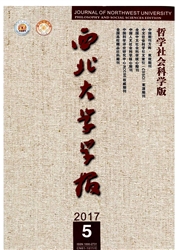

 中文摘要:
中文摘要:
老龄化在发达国家和包括中国在内的新兴国家愈演愈烈,养老、医疗和长期照护成为老年生活保障的重要支柱。不同福利模式的国家在老年长期照护制度构建上体现差异,“社会民主主义”和“法团主义”将老年长期照护看作是社会风险,建立了普及的或者广泛覆盖的财政或社会保险资金支持的长期照护制度;“自由主义”和“家庭主义”更强调长期照护的个人风险和家庭风险属性,财政支持较前两种弱。中国长期照护的制度化未成形,家庭照护面临供给不足,机构照护出现供给错位,失能老年的长期照护成为亟待解决的难题。通过对四种福利模式长期照护制度的比较,借鉴美国“补缺制”长期照护的经验,提高公共资金支持和公共机构服务的“瞄准度”,从需求最高但支付能力最弱的老年群体入手,化解最弱势老年群体的个人风险。
 英文摘要:
英文摘要:
Aging becomes a more serious problem to the developed and developing countries which include China, and long-term care with pension and health care is very important pillar to support the elderly lives. The long-term care systems vary between different welfare modes and the paper provides an overview. The long - term care is regarded as social risk in social-democracy welfare regime and the conservative-corporatist welfare regime, both of which covering universally or widely and funding through general taxes or contribution. The liberal welfare regime and the family - based welfare regime treat the long - term care of the elderly as personal risk and family risk re-spectively and public finance supports in these countries are less than the former two. In China, the amount of home carers is inadequate and the supplies of institutional care service do not match the demands. Through compar-ison of the long - term care systems in four welfare regimes and learning from the United States whose role is "resid-ual", this paper suggests that public funds and services must aim at the old people who are with the highest de-mands but not affordable in order to help the most vulnerable age group to resolve the personal risk.
 同期刊论文项目
同期刊论文项目
 同项目期刊论文
同项目期刊论文
 期刊信息
期刊信息
